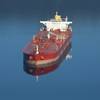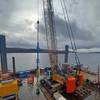Location of New Port Expansion Projects: Analysis
When it comes to port development, many governments now favour letting the market decide where expansion should take place, whereas most other transport infrastructure, such as roads and rail, remains centrally managed. The problem is that old habits die hard in shipping, meaning that the free market approach is sometimes a painful process, as discussed here in an excerpt from recent Drewry Maritime Research.
While some observers might argue that the Middle East has a reputation for vanity port projects – with governments building shiny new ports just because they can – the reality is that utilisation levels in many of the region’s gateways are high and new capacity is needed. However, this alone does not necessarily guarantee that the new ports will be used. The existing, old ports often have better proximity to their hinterlands, plus extensive vested interests who want to see the status quo maintained.
The solution adopted by many Middle Eastern governments is to order the closure of the old ports and the transfer of their volumes to the new ones. Whilst this would not be an option for footloose transhipment traffic, gateway traffic has no option but to toe the line.
The Middle East though, is the exception rather than the rule. In most other locations, governments and port authorities now seek to let the market decide which ports to use, banking on the fact that newer terminals offer better facilities, deeper water and higher service levels. However, whilst the market will happily decide, it may not choose the option that investors, port authorities and governments want.
In some locations, the authorities have promised to ensure that old facilities will be closed down – but this has proved to be easier said than done. In Vietnam for example, a number of international terminal operators have invested in new deep water facilities in the Cai Mep area, downriver from the older Ho Chi Minh City facilities which are draught restricted and suffer congestion (in August carriers will be imposing a congestion surcharge for the Cat Lai terminal for example).
The development of terminals at Cai Mep was motivated partly by Vietnam’s booming trade growth (which was subsequently hit by the global financial crisis – and ironically Cai Mep port opened fully in 2009), but also on the understanding that some of the Ho Chi Minh City terminals would close down. This has not happened (and indeed the river approach to Ho Chi Minh City has recently been dredged to allow larger vessel access). The reasons for this are many, but vested interests are high on the list – both from the local municipalities in each location and from the Vietnamese Navy which gains revenue from the upriver terminals.
In addition, while carriers initially started deploying large mainline vessels of over 8,000 teu to Cai Mep, the slowing of volume growth, the fragmented nature of the carrier market serving Vietnam, and the need to barge containers between Ho Chi Minh City and Cai Mep at carriers’ expense, has led to a reversion to feeder vessels calling at the upriver terminals. The Cai Mep facilities are severely under-utilised, so much so that in 2013 the Vietnamese Ministry of Transport had to set a mandatory two-year minimum handling price to try and protect terminal operators. Small consolation to those with no cargo though.
A similar story prevailed in Busan port, South Korea. Whilst Busan New Port was being developed, the understanding was that some of the existing terminals in the old port area would be closed down. However, vested interests resisted the change and the early days of Busan New Port after it opened in 2006 saw very low utilisation levels. However, over time, things have improved markedly, partly due to the closure of some of the old port facilities but mainly because of the rapid growth in ship sizes calling at the port.
The terminals in the old port have not been able to offer the kind of infrastructure and equipment the big ships need, and so in effect, the market has – belatedly – decided. Today, more than half of Busan’s volume is handled at the New Port, and the share is growing, and another one of the terminals (UAT) in the old port has just closed down.
Industry observers might be forgiven for thinking that governments and port authorities being unable or unwilling to close old ports and terminals is as extreme as it gets. However, it can get worse.
For example, in Djibouti, DP World won a long term deal to handle containers on an exclusive basis, developing and opening in 2009 the new Dolareh Container Terminal with its majority partner, the Djibouti port authority (PDSA). The old existing terminal, run by PDSA, was closed down. In 2011 though, DPW’s exclusivity was terminated and the old terminal was brought back into operation by PDSA, phoenix style.
Whether central government control of port capacity is preferable to letting the market decide is a matter of opinion, but either way, when governments and port authorities make promises to close capacity, they have to live up to them. Otherwise the private sector will think twice about investing. They also need to recognise that it is one thing to move a port or terminal to a more preferable site, it is another to expect forwarders to abandon their warehouses at the same time.
Drewry's View
In the absence of overt central control, the market will decide which ports and terminals to use. However, experience shows though that habits (and old ports) die hard in shipping, so external encouragement for change is often required.
Source: Drewry Maritime Research











